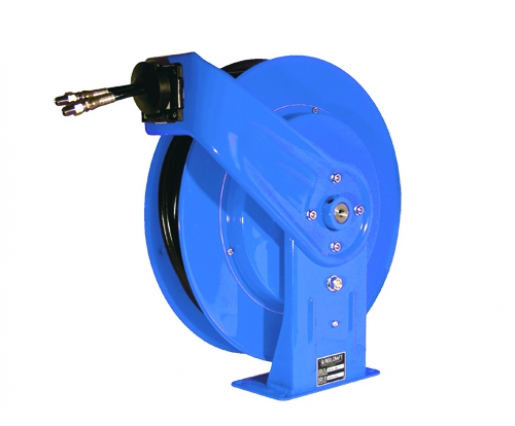Lubrication is the lifeblood of modern industry. More than just a ‘machine additive’, lubricants are crucial to the safe, reliable, efficient functioning of all machinery.
Without proper and timely lubrication, even our most advanced workhorses of industry would succumb to the frictional stresses of wear, overheating and corrosion.
Machine bearings are particularly susceptible to haphazard lubrication procedures. According to leading industry journal Machinery Lubrication, up to 80 percent of all bearing failures are the result of improper lubrication, with considerable potential to trigger not only catastrophic machine failure, but full assembly-line stoppages.
Indeed, beyond the more obvious – and onerous – repair costs, the potential fallout from lubrication-related failure can prove crippling for the today’s businesses: from protracted downtime, to the more insidious consequences of functional failure (whereby machines consistently under perform specifications), and premature failure (a reduction in the operational lifecycle of machine parts), both serious hogties on long-term efficiency.
Yet despite the critical importance of lubrication to basic mechanical functions, it appears more and more that the once routine process of oiling and greasing has fallen by the wayside. Whether through improper lubricant selection, substandard application, or simple neglect of lubricant degradation, it’s clear that this essential maintenance procedure is being sidestepped or, even worse still, entirely overlooked.
So what’s triggered this dangerously lackadaisical approach to this essential maintenance process? While many would claim it is simply poor in-house processes, some industry experts have cast blame on the success of today’s predictive maintenance programs.
Indeed, so effective are these programs in rooting out and resolving equipment problems, ‘we [have],’ according to Machine Maintenance, ‘[lost] sight of the fact that many components are failing early because lubrication best practices (right lubricant, right time, right quantity, clean, dry and cool) have not been established.’
So in our increasingly automated world, how can we ensure the consistent and reliable application of manually applied lubricants that protect our machines of industry?
The Challenges of Modern Lubrication
Lubrication is a deceptively fine art. Too little lubricant, and internal mechanisms will be exposed to frictional wear; too much, and the lubricant’s base oil will rapidly churn, thicken and disintegrate, leaving little grease to effectively lubricate the bearing.
With a countless array of fittings and access points, the complexity of modern machinery presents its own difficulties for maintenance crews. Indeed, one of the chief obstacles to effective and consistent lubricant delivery is the difficulty posed in simply accessing the machine’s grease zerk nipples. As a result, what was once a simple greasing process has become cumbersome and time-consuming rigmarole.
What’s more, the physical demands of the lubrication process can prove a serious workplace hazard. Awkward positioning of grease fittings places maintenance workers at risk of severe grease injection injuries. The consequences of a high-pressure injection injury can be devastating: from tissue damage to potential loss of limb.
As such, the key to a successful lubrication regime is to incentivise maintenance crews with the tools, skills and know how to ensure consistent, accurate and safe delivery of lubricant.
5 Steps to Foolproof Machine Lubrication
1.Abide by the lubrication recommendations of the machine manufacturer, including quantity and type of lubricant (e.g. oil or grease-based, viscosity requirements etc.); avoid the temptation to over-lubricate bearings.
2.Be mindful of WHS requirements. Ensure workers can easily access grease ports: awkward positioning could induce high-pressure injection injuries and may affect the consistency and accuracy of lubricant delivery.
3. Keep an eye on machine gauges (such as temperature) for early indications of problems and under-lubrication; optimal operating temperatures for bearings are between 35 °C and 70 °C, though this can vary greatly depending on external environment.
4.Listen for noise or unusual machine vibrations.
5. Watch for any fluid leaks, which could indicate over-lubrication or other serious mechanical faults.
The Reel Link to Successful Lubricant Delivery
Achieving successful lubrication requires regular, precise and targeted lubricant application.
As one of the chief delivery mechanisms for machine lubricants, the hose line is the forgotten hero of the manual lubrication process. A quality industrial-grade lube hose is essential for the effective maintenance of both mobile and plant-based equipment, offering seamless access to the most hard-to-reach grease access ports.
Built to withstand the extreme pressures of oil or grease conveyance, industry-grade lubrication hoses offer maintenance crews superior handling and quantity control over lubricants for manual grease or oil top-up, critical to dispensing lubricant in a consistent, safe and precise manner.
Yet a lubrication hose cannot exist without a quality support reel.
Industrial-grade steel framed reels help to deliver convenience, protection and ergonomic support for a vast array of lubrication hoses.
Safety is at the forefront of today’s industrial hose and reel designs. These ultra-robust systems are specifically designed to with stand the environmental extremes of the plant floor, helping you meet stringent workplace health and safety requirements.
As Australia’s premier supplier, manufacturer and distributor of industrial-grade hose reels, ReCoila is dedicated to delivering superior quality hose reels for the most challenging industrial requirements.
ReCoila’s expertly engineered hose reels are built to deliver safe and measured conveyance of lubricant. These ultra-robust reels offer maximum ergonomic support throughout the lubrication maintenance processes, whilst supporting consistent, predicable and measured lubricant flow.
The loose hose line presents one of the more obvious ‘trip and slip’ hazards on the work site. A quality spring-retractable reel significantly reduces the risk of kinking, knotting or straying of hoses, eliminating this niggling work site hazard. With a gentle tug, these robust auto-rewind reels offer safe and secure storage for hose lines, markedly increasing their operational lifecycle.
With reliability, safety and quality at its core, ReCoila can recommend the best hose reel for your unique lubrication needs.
This article was produced in conjunction with Cirrus Media and was published in Manufacturers Monthly

